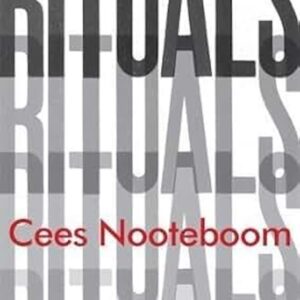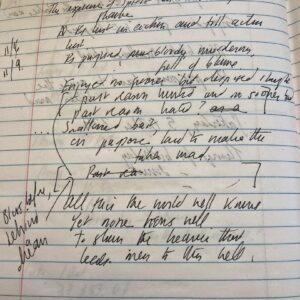One of the strangest contemporary ironies is that in a time when fewer people than ever seem to actually read books, “books”-—both the texts themselves and the careers of the people who write them—are bigger than ever.
To begin with, works of mainstream fiction and nonfiction—middlebrow on up—seem to only grow longer and longer. Jonathan Franzen’s big 2021 Crossroads (which, for the record, I liked) clocks in at 580 pages, alongside the 563 of his 2015 novel Purity, which I didn’t read, and 562 of 2010’s Freedom, which I did. This is not exactly a new phenomenon–David Foster Wallace’s Infinite Jest, which I have tried and failed to read, came in at a full 1088 pages–and is replete with footnotes and endnotes,
Infinite Jest may well be an instructive example. David Foster Wallace’s novel came out in 1995–the same year as Windows 95 was released, when the future began, and the first time I ever sent an email.
While I was thinking back, I started wondering when AOL.com was launched, and was astonished that, come to find out, it had begun all the way back in 1985.
Which means, I would aver, that the endless, elliptical, “talky” quality of these long long works might derive in some fashion from the endless talkiness that had already been launched by the ease of the computer interface, and Windows 95’s software precursors. And it’s a problem that’s only exacerbated by the precipitous decline of editing: “if this meeting could have been an email,” then Crossroads probably could have been sliced from 580 pages to 400.
The other manifestation of inescapable bigness is that the winner-take-all phenomenon—so evident in other areas of the economy—has yielded literary careers of immovable, boulder-like size. And this is not just true of the James Pattersons or the Jonathan Franzens, but also the Joyce Carol Oateses and Ann Patchetts and even Louise Erdrichs. The writers may be hardworking and the books may be good (i.e., I’m not arguing with their success), but forgive me if, underneath the hype of all the releases, I hear the sound of an endless machine, grinding forward, seeking to drive out everything else in their categories.
Imagine the thrum of all these machines at once, and add in online culture and social media on top of that, and the sound is deafening.
Perhaps that’s why I have come to be a fan of one-off, sui generis works of literature– books that may be quirky, failed, unexpected, oddly-structured, or belated, but which constitute little shoots of green poking out from under these boulders of literature. I first thought about this category in an African-American Literature class in college when I read Cane, Jean Toomer’s otherwise-unclassifiable, incantatory prose poem about the varieties of Black folks and Black experience. That was followed by Tillie Olsen’s Yonandio: From the Thirties, a collection of stories (maybe it’s better to say “texts”) that Olsen had written in medias res of working, raising children, and political organizing.
But the pleasures of these kinds of works come not only from ones that are academic, or highbrow. The erstwhile conservative writer Danielle Crittenden published a novel called Amanda Bright @ Home that was about a stay-at-home mother in Washington dealing with quotidian boredom and angst (her husband’s job, her stylish unmarried friend, her son’s private school shenanigans) that was first published in epistolary form, week by week, in the Wall Street Journal. Each segment came out on Fridays and was appointment reading for me, furtively at my desk during the workday. It was incredibly fun to read and came out a full two years before I Don’t Know How She Does It, which became known as the standard-bearer for that kind of chick-lit during the 00s. Since then, Crittenden has published a wild diversity of writings and podcasts, but has never returned to realistic fiction.
And whatever this category is, it is not even limited to fiction. Jeanne Scinto’s Huddle Fever is both a personal nonfiction account of life in the poor immigrant city of Lawrence, Massachusetts, and an ethnography of its settlement and transformation. Scinto published a couple of volumes of fiction and has written extensively on art and antiques, but there’s nothing else quite like this book, even from her.
Similarly, another one of my all-time favorite books is D. J. Waldie’s Holy Land, a slim compilation of hypnotic personal essays blended with photography and historical research on his postwar suburban hometown of Lakewood, California. It’s an oddly devotional work, made even more so by the fact that Waldie worked on the volume around his workdays as the City of Lakewood’s public information officer.
Perhaps that’s what it boils down to, the one common theme of all these one-off volumes: they represent a singular creative movement amid the lives of their authors, that is ultimately evanescent. They are the opposite of the books or careers that are like immovable boulders, or worse, business franchises. They produced something, and then they moved on. They are the living personification of Diana Vreeland’s purported fashion dictum, Elegance is refusal.
Just a couple of weeks ago, my emotions about these kinds of books were stirred up once again when I read Max Norman’s portrait of writer Evan S. Connell “The Man Who Mastered Minor Writing,” in the 12/12/22 edition of The New Yorker. If you know Connell at all, it is probably for his novels Mrs. Bridge and Mr. Bridge, which offer crystalline portraits of an upper-class Kansas City couple.
Norman also explains why you might not know him at all–he was the opposite of a literary franchiser:
“…Connell, who died in 2013, is in part to blame for his own obscurity. More than just camera-shy and subdued, he avoided anything that resembled a traditional career, and—writing almost always on spec, without a contract—was uninterested in developing a literary brand. His bibliography can’t be plotted in straight lines, or even in zigzags: it’s a confusing scattershot…
“If anything ties his work together, it’s the skeptical, even scathing clarity of vision that Connell cast on his subjects, and on the mechanisms of narrative itself.”
Ahh, that’s it. I see now that all the works I’ve cited above have the same “scathing clarity of vision… “on the mechanisms of narrative” themselves. It’s perhaps the one thing that unites them.
Norman tells us: “In the late seventies, Connell turned away from straight-ahead fiction and concentrated almost entirely on fact: long historical essays reminiscent of Guy Davenport, a deeply researched account of Lieutenant Colonel Custer and Little Bighorn, an erudite chronicle of the Crusades, and, finally, a typically idiosyncratic biography of Francisco Goya. Connell was engaged, [biographer Steve] Paul argues, in ‘a nonstop, absorbing project of literary alchemy’—only the alchemy was achieved not through illusion but by its opposite.”
A nonstop, absorbing project of literary alchemy. That’s an ambition for all of us.
Caroline Langston was a regular contributor to Image’s Good Letters blog, and is writing a memoir about the U.S. cultural divide. She has contributed to Sojourners’ God’s Politics blog, and aired several commentaries on NPR’s All Things Considered, in addition to writing book reviews for Image, Books and Culture, and other outlets. She is a native of Yazoo City, Mississippi, and a convert to the Eastern Orthodox Church. She lives outside Washington, D.C., with her husband and two children.





